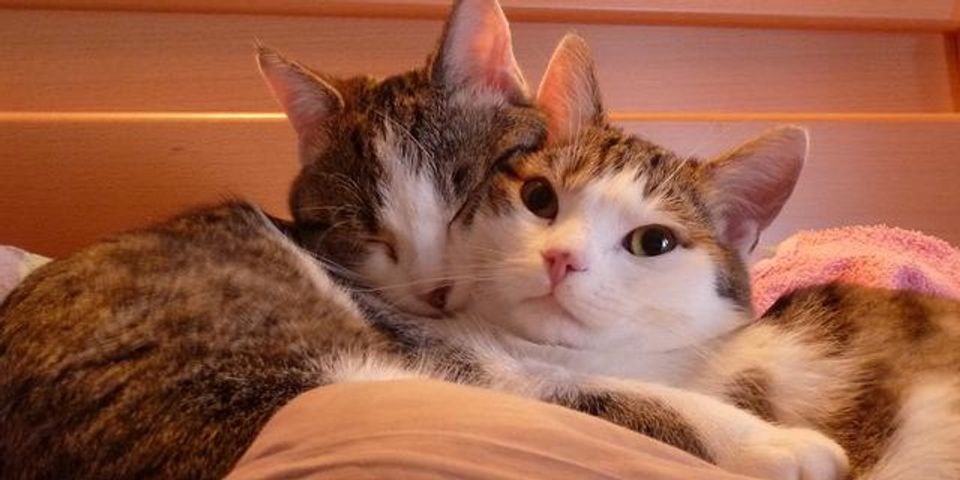
Why do cats purr? The short answer is: we don’t know for sure.
What we do know about purring:
A feline purr is produced using the larynx (the opening to the windpipe where the vocal cords live) and diaphragm. According to scientificamerican.com, the purr happens during both inhaling and exhaling, with a vibrational frequency of between 25 and 150 Hertz. It is theorized that this frequency improves bone density and promotes healing of bones and muscles. So purring may be a mechanism for self-healing, and might explain why we see fewer bone problems with cats than with dogs.
When do cats purr?
Cats purr in a variety of situations and in response to different stimuli. Things that can stimulate feline purring include:
- Contentment: Sitting in a favorite human’s lap, lying in the sun, nuzzling up to a favored feline friend are all examples of situations that can induce purring. These are circumstances that seemingly represent true feline contentment.
- Wanting something: Purring can accompany feline requests for something they want, and might be heard at mealtime or when a kitty wants some lap time. This purring is often associated with some vocalization and animated behavior such as weaving in and out of their human’s legs.
- Fear: Believe it or not, some cats purr when distressed or fearful. Such purring is commonly observed in a veterinary hospital setting, and can be quite audible.
- Kitten-mother connection: Kittens begin purring when they are only a few days old. It is most noticeable when they are in close connection with their mama. In fact, kittens are capable of purring while nursing, and mama kitty typically purrs in response. Perhaps this purring behavior represents a means of bonding between a mother cat and her offspring.
Adapted from an article by Dr. Nancy Kay, DVM, DACVIM, http://www.pethealthnetwork.com/
Photo credit yellowcloud www.flickr.com
About the Business
Have a question? Ask the experts!
Send your question

